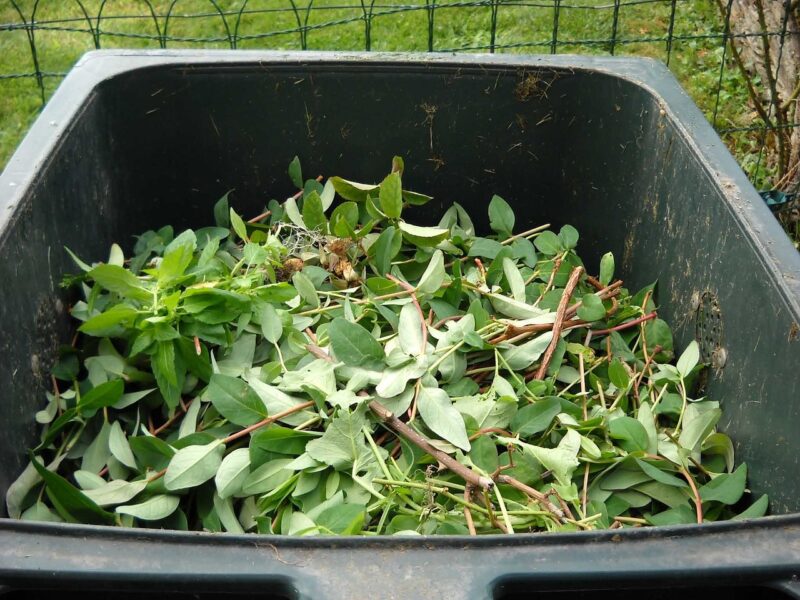A Guide to Composting at Home: Turning Waste into Nutrients
November 2, 2024

Composting is a sustainable way to turn kitchen scraps and yard waste into rich, nutrient-dense soil. This guide walks you through the basics of composting at home, including types of composting, essential materials, and tips for maintaining a healthy compost pile. Whether you live in a small apartment or have a spacious backyard, composting is a rewarding way to reduce waste and benefit the environment.
1. What is Composting?
Composting is a natural process where organic waste—such as food scraps, leaves, and grass clippings—breaks down into nutrient-rich soil known as compost. This process occurs through the activity of microorganisms, worms, and other decomposers that transform waste into humus, which enriches soil and promotes healthy plant growth.
2. Benefits of Composting at Home
Composting offers a range of environmental and personal benefits, such as:
- Reduces Waste: Composting can divert a large portion of household waste from landfills, lowering methane emissions.
- Improves Soil Quality: Compost provides essential nutrients, improves soil structure, and increases water retention.
- Cost-Effective Fertilizer: Compost serves as a natural, nutrient-rich fertilizer, reducing the need for chemical products.
- Promotes Eco-Conscious Living: Composting fosters a greater awareness of waste and sustainability in everyday life.
These benefits make composting a valuable practice for those looking to live more sustainably and create positive environmental impact.
3. Types of Composting Methods
There are several methods of composting, each suited to different living spaces and lifestyles:
- Traditional Composting: Involves creating a compost pile or bin outside where organic materials decompose over time.
- Vermicomposting: Utilizes worms, typically red wigglers, to break down food waste in a container, ideal for indoor composting.
- Bokashi Composting: A Japanese method that uses bran inoculated with beneficial microbes to ferment food waste, suitable for indoor spaces.
- Tumbler Composting: A contained composting method using a rotating bin, which accelerates decomposition and reduces odors.
Choosing the right composting method depends on your space, time, and composting goals.
4. Getting Started: Essential Composting Materials
A healthy compost requires a balanced mix of “green” and “brown” materials:
- Green Materials (Nitrogen-Rich): Includes fruit and vegetable scraps, coffee grounds, grass clippings, and green leaves.
- Brown Materials (Carbon-Rich): Includes dry leaves, straw, cardboard, and shredded paper.
Maintaining the right balance (roughly 2 parts brown to 1 part green) is essential for effective composting.
5. Step-by-Step Guide to Setting Up Your Compost
Here’s how to start a compost pile or bin in your backyard or on your balcony:
Step 1: Choose a Container or Location
Select a bin, tumbler, or open pile based on your available space. Place it in a shaded area to retain moisture.
Step 2: Layer Brown and Green Materials
Begin with a layer of brown materials for aeration, followed by green materials, then alternate.
Step 3: Monitor Moisture Levels
The compost should feel like a damp sponge. Add water if it’s too dry, or add more brown materials if it’s too wet.
Step 4: Turn the Compost Regularly
Turning the pile once a week introduces oxygen, accelerating decomposition and reducing odor.
Step 5: Be Patient and Observe
Composting takes time—typically 2 to 6 months. Observe the pile to ensure balance, adjust as needed, and avoid adding meat, dairy, or oily foods that attract pests.
6. Troubleshooting Common Composting Issues
Common composting challenges include:
- Odor: Strong odors often indicate too much moisture or green material. Add more brown materials and turn the pile.
- Slow Decomposition: This can result from a lack of moisture, brown materials, or oxygen. Regular turning and adjusting the green-to-brown ratio help.
- Presence of Pests: Avoid adding meats and cover food scraps with brown materials to prevent pests.
Proper maintenance will address most issues and ensure a smooth composting process.
7. Using Your Finished Compost
Finished compost is dark, crumbly, and has an earthy smell. You can use compost in several ways:
- In the Garden: Mix it into the soil to improve texture and nutrient content.
- As Mulch: Apply a layer around plants to retain moisture and suppress weeds.
- In Potting Soil: Add compost to potting mixes to enhance nutrient availability for container plants.
Compost enriches soil and supports healthy plant growth, making it an excellent addition to any garden.
Conclusion
Composting at home is a practical, eco-friendly way to reduce waste and create valuable nutrients for your garden. By choosing the right composting method and following basic maintenance steps, you can enjoy the benefits of composting and make a positive impact on the environment. Start your composting journey today and turn waste into a resource that helps your plants thrive.







